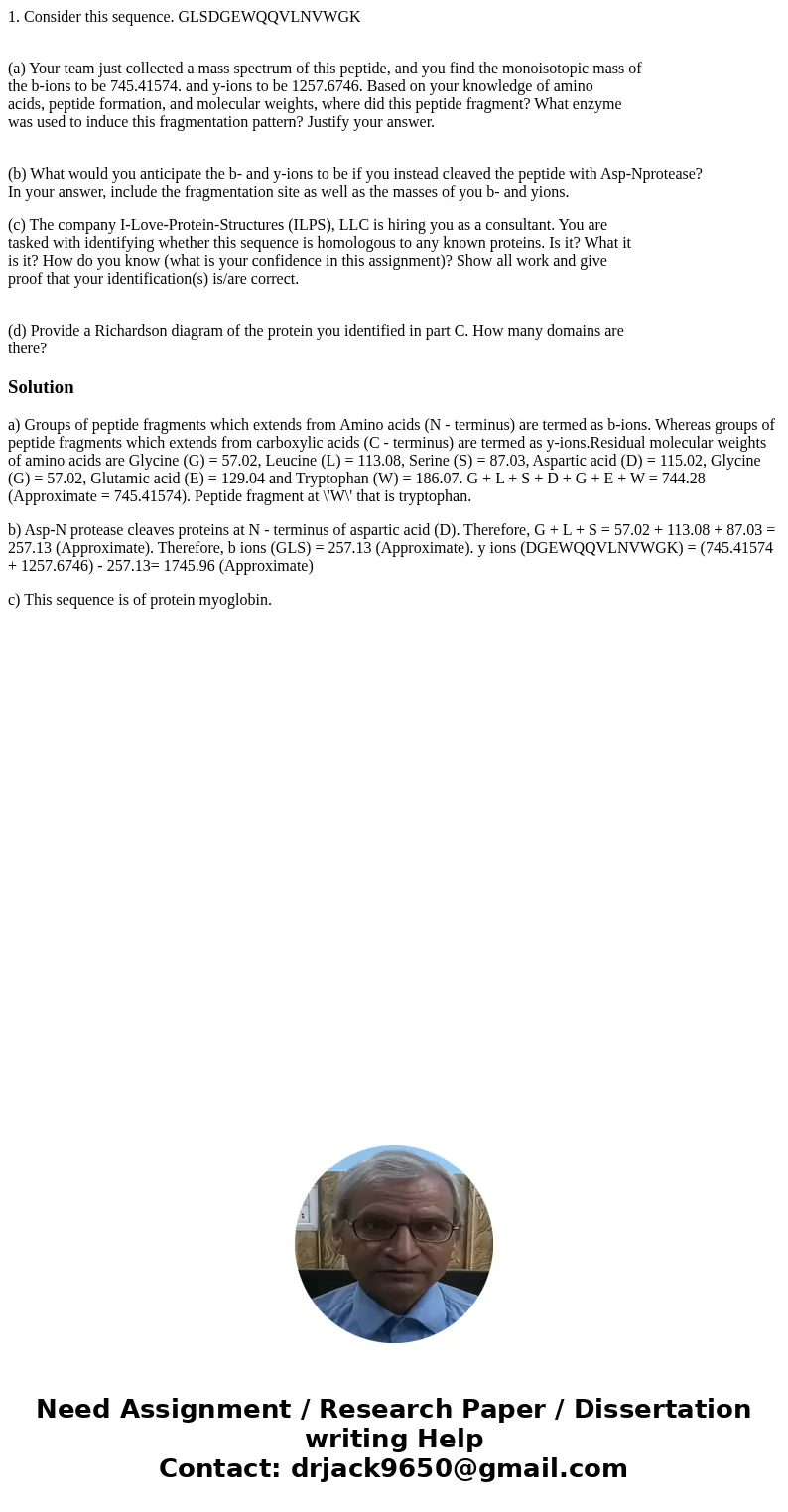1 Consider this sequence GLSDGEWQQVLNVWGK a Your team just c
1. Consider this sequence. GLSDGEWQQVLNVWGK
(a) Your team just collected a mass spectrum of this peptide, and you find the monoisotopic mass of
the b-ions to be 745.41574. and y-ions to be 1257.6746. Based on your knowledge of amino
acids, peptide formation, and molecular weights, where did this peptide fragment? What enzyme
was used to induce this fragmentation pattern? Justify your answer.
(b) What would you anticipate the b- and y-ions to be if you instead cleaved the peptide with Asp-Nprotease?
In your answer, include the fragmentation site as well as the masses of you b- and yions.
(c) The company I-Love-Protein-Structures (ILPS), LLC is hiring you as a consultant. You are
tasked with identifying whether this sequence is homologous to any known proteins. Is it? What it
is it? How do you know (what is your confidence in this assignment)? Show all work and give
proof that your identification(s) is/are correct.
(d) Provide a Richardson diagram of the protein you identified in part C. How many domains are
there?
Solution
a) Groups of peptide fragments which extends from Amino acids (N - terminus) are termed as b-ions. Whereas groups of peptide fragments which extends from carboxylic acids (C - terminus) are termed as y-ions.Residual molecular weights of amino acids are Glycine (G) = 57.02, Leucine (L) = 113.08, Serine (S) = 87.03, Aspartic acid (D) = 115.02, Glycine (G) = 57.02, Glutamic acid (E) = 129.04 and Tryptophan (W) = 186.07. G + L + S + D + G + E + W = 744.28 (Approximate = 745.41574). Peptide fragment at \'W\' that is tryptophan.
b) Asp-N protease cleaves proteins at N - terminus of aspartic acid (D). Therefore, G + L + S = 57.02 + 113.08 + 87.03 = 257.13 (Approximate). Therefore, b ions (GLS) = 257.13 (Approximate). y ions (DGEWQQVLNVWGK) = (745.41574 + 1257.6746) - 257.13= 1745.96 (Approximate)
c) This sequence is of protein myoglobin.

 Homework Sourse
Homework Sourse